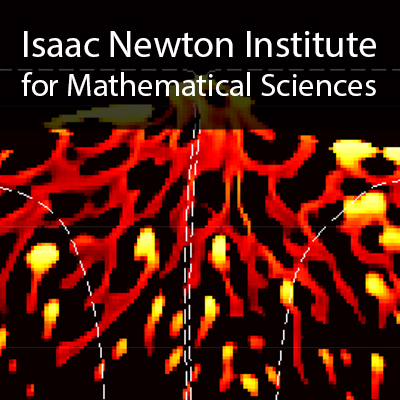Geodynamics and Two-Phase Flow: A Computational Perspective
1 hour 6 mins,
255.31 MB,
iPod Video
480x270,
29.97 fps,
44100 Hz,
528.15 kbits/sec
Share this media item:
Embed this media item:
Embed this media item:
About this item

| Description: |
May, D (ETH Zürich)
Friday 19th February 2016 - 11:30 to 12:30 |
|---|
| Created: | 2016-02-22 16:10 |
|---|---|
| Collection: | Melt in the Mantle |
| Publisher: | Isaac Newton Institute |
| Copyright: | May, D |
| Language: | eng (English) |
| Distribution: |
World
|
| Explicit content: | No |
| Aspect Ratio: | 16:9 |
| Screencast: | No |
| Bumper: | UCS Default |
| Trailer: | UCS Default |
| Abstract: | The system of partial differential equations used in geodynamic contexts to study melt migration define the evolution of a two-phase system comprised of a highly viscous, porous crystalline mantle rock ("solid" phase) through which low viscosity magma ("fluid" phase) can flow. Typical geodynamic two-phase flow scenarios are characterized by rheological non-linearities, localization and flows possessing a range of characteristic length scales.
From a computational stand point, the inherently stiff and non-linear coupling between the fluid and solid phases, together with the typical flow characteristics associated with geodynamic processes represent a number of challenges with respect to: (i) the choice of primary variables; (ii) the choice of temporal and spatial discretisation scheme, and (iii) the development of efficient techniques for solving the discrete system of equations. Within the context of these three themes, I will review the commonly adopted philosophies, computational methods and software used by the geodynamics community to study the dynamics two-phase flow systems. Trade-offs and compromises associated with the scope of the modelling software will be discussed, along with an identification of the numerical components which are presently lacking, or devoid of, rigorous mathematical analysis. Lastly, I will discuss recent algorithmic and software developments of highly efficient and scalable solver-discretisation components which will be crucial in enabling the simulation of high resolution, three-dimensional two-phase flow systems. |
|---|---|
Available Formats
| Format | Quality | Bitrate | Size | |||
|---|---|---|---|---|---|---|
| MPEG-4 Video | 640x360 | 1.96 Mbits/sec | 972.42 MB | View | Download | |
| WebM | 640x360 | 595.59 kbits/sec | 287.91 MB | View | Download | |
| iPod Video * | 480x270 | 528.15 kbits/sec | 255.31 MB | View | Download | |
| MP3 | 44100 Hz | 252.89 kbits/sec | 122.25 MB | Listen | Download | |
| Auto | (Allows browser to choose a format it supports) | |||||

